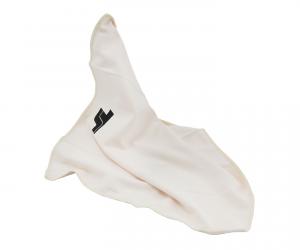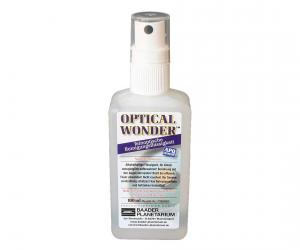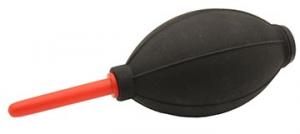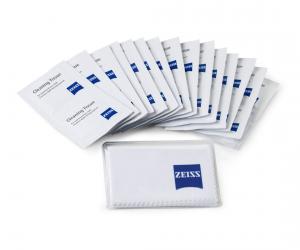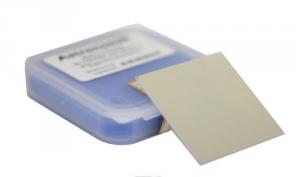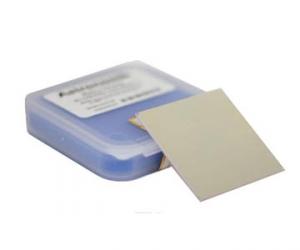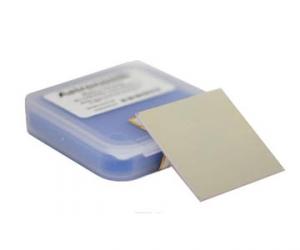- Telescopes
- Overview:
Telescopes - Achromatic Refractor
- Apochromatic Refractor
- Overview:
Apochromatic Refractor - ED Refractor - less color aberration than an achromatic
- SD APO - color free 2-element APO objective
- EDT APO - 3 element ED objective
- High End APO with 3-element APO objective - no color aberation
- Flatfield APO with flat field for Astrophotography
- All Apos and EDs from all manufacturers - large overview
- TS APO and ED from Japan with high quality optics
- Overview:
- Newtonian Telescopes
- Dobsonian Telescopes
- RC Ritchey Chretien Telescopes
- Casssegrain Telescopes
- Reflektor Telescopce with Lens Correcture
- Maksutov Cassegrain Telescopes
- GoTo Telescopes
- Solar Telescopes H-Alpha
- Overview:
- Mounts Tripods Rings Rails Power Supply ...
- Overview:
Mounts Tripods Rings Rails Power Supply ... - Mounts Equatorial with GoTo
- Mounts Equatorial without GoTo
- Mounts Azimutal with GoTo
- Mounts Azimutal without GoTo
- Mounts GoTo - Harmonic Drive
- Travel mounts for astro imaging
- Tripods Piers Polar Wedges
- Mount Control & Electronics
- Dovetail Clamps, Plates and Mount Adapters
- Tube Rings
- Power Supply
- Counterweights Balance Weights
- Mount Accessories - Other
- Overview:
- Telescope Accessories
- Overview:
Telescope Accessories - Eyepieces
- Barlows & Reducer Lenses
- Diagonal Mirrors and Prisms
- Binocular Viewers
- Finder Scopes
- Telescope Collimation and Test
- Cleaning Tools
- Transport and Storage
- Dust protection for Telescopes & Accessories
- Stray Light Protection
- Dewcaps and Heater
- Focusers, Adapters, Motorfocus
- Telescope DIY & Improvement
- Other telescope accessories
- Replacement Parts
- Overview:
- Filters
- Overview:
Filters - Color Filters and Color Filtersets
- Nebular Filters for Visual Observing
- Neutral-Density and Polfilter
- Photo Narrowband Nebular Filters
- Photo Broadband Filters
- Photo Planetary Filters
- Photo R-G-B and IR Cut Filters
- Photo - Filtersets
- Photometric Filters
- Clip Filter for DSLR Cameras
- Filter Wheels and Filterslider
- Solar Filters for white light
- Solarfilter for H-Alpha and Calcium
- Overview:
- Adaptors
- Overview:
Adaptors - Adapter 1,25" and 24,5mm
- Adapter 2"
- Adapter T2 - M42x0.75
- Adapter M48x0,75
- Adapter M54
- Adapter SC
- Adapter M63
- Adapter M68
- Adapter to other Threads
- Adapter Extensions
- Adapter camera bayonet
- Adapter Objective Filterthread
- Adapter Quick Changing , Rotation
- Adapter Eyepiece Projection
- Adapters Tilting
- Overview:
- Astrophotography and Photography
- Overview:
Astrophotography and Photography - Cooled Cameras
- Cameras without Cooling
- Deep-Sky Cameras uncooled
- Set-Offers Camera, Filter, Wheels
- Acessories for Cameras
- Travel mounts for astro imaging
- Imaging Correctors for Telescopes
- Autoguiding Cameras & Sets
- Everything for Guiding
- Focusing aids - Bahtinov mascs
- Flat Field foils and boxes
- Lenses for Cameras
- Piggyback Camera Holder
- Camera Bags, Photocases & more
- Digital Camera and Smartphone Adapter
- Other photo accessories
- Overview:
- Binoculars, Spotting Scopes, Microscopes, Range Finders
- Overview:
Binoculars, Spotting Scopes, Microscopes, Range Finders - Roof Prism Binoculars
- Binoculars with Porro prisms
- Binoculars from 100mm Aperture
- Binoculars with 1,25 inch eyepieces
- TSMX APO Binoculars
- Binoculars for Astronomy
- Binoculars Hiking Bird watching
- Monoculars - Opera Binoculars
- Accessories for Binoculars
- Spotting Scopes
- Range Finders
- Microscopy
- Bags for Phototripods & Binoculars
- Overview:
- Phototripods and Binomounts
- Books, Software
- Overview:
Books, Software - Books for Astronomy Beginners
- Star Charts and Planispheres
- Books about our Solar System
- Observing Tips for Amateurs
- Popular Astronomy Literature
- Teaching material
- Astrophotography books
- Telescopes, Observatories, Construction
- Calendars Yearbooks
- Software, Star Charts
- Books for Microscopers
- Books Nature and Animals
- Nature Photography TimeLapse
- Overview:
- Night Vision, Magnifiers, Weather, Domes & more
- Beginner Astronomy and Gift Ideas
- Second Hand & Special Offers
- New products
Manufacturer: Astronomik Filter
Product number: 8h00hn
EUR339.00new
EUR 339,00
incl. 19 % VAT (DE)
The VAT indicated refers to that applicable in Germany. After logging in, the VAT amount is adjusted to the applicable VAT of the stored delivery country. Therefore, the final price may vary accordingly.
excl. 6.95 € shipping costs (DE)
more details to the shipping costs ...Please log in to calculate shipping costs to your country.
There are no reviews for this product
- Details..
- Technical data..
- In the box..
This Astronomik [O III] Filter is suitable for imaging of OIII nebulas from observation sites with light pollution and from dark sites as well. The contrast between an object glowing at 501 nm and the background is increased enormously!
Due to the combination of the narrow bandwidth of 12 nm and the high transmission of typically 96% the filter gives you a contrast boost, as all unwanted light from other wavelengths than 501 nm is blocked (from UV to IR). This results in a very dark background compared with any filters with a higher bandwidth.
The FWHM of 12 nm is optimized for typical DSLR and astro cameras with a normal/high dark current: with these cameras the background signal in images taken from heavily light-polluted sites is dominated by the dark current of the sensor, not by flux coming from light pollution. In this case a further reduction of FWHM does not improve the image, as the background will not get darker. Compared to the 6 nm filters you have more stars in the field of view which gives you more guiding stars when working with an integrated/dual guiding chip!
Due to the new MFR coating technique you may use one single filter on all instruments up to f/3 without a significant reduction in performance.
Imaging with narrowband emission line filters:
If you have to observe from light polluted sites (like most of us ...), imaging with narrowband emission line filters is the best way to take great images, as all kind of light pollution can be blocked very effective! Normally an H-alpha filter should be your first step into this amazing field of astrophotography! With a arrowband H-alpha filter you will be able to take deep and contrasty images even with very heavy light pollution or with the full moon high up in the sky!
If you look at other astrophotos, an H-alpha filter is the best choice for all nebulas glowing red! An OIII filters expands your imaging possibilities, as you are able to image all greenish/blueish structures. Planetary nebulas and star forming regions are great targets! The SII filter completes your HSO set of filters. With these three filters you are able to process your images like the ones from the Hubble space telescope!
The H-beta filter is not available in a 6 nm version, as this filter has nearly no meaningfull application.
Operation of the filter:
The filter blocks all unwanted light from artifical light pollution, natural airglow and moonlight. Especially light from high and low pressure sodium and mercury lights and all lines of natural airglow are 100% blocked. The filter increases the contrast between the sky background and objects glowing at the [O III] line at 501 nm.
Tips and hints for more applications:
Using the OIII filter together with H-alpha and SII filters, you can produce false color emission line images (HSO) in the same way as the Hubble Space Telescope. This is possible even from heavily light-polluted sites
Alternatives:
If want to image faint objects in star-crowded regions of the milky way, propably using short focal lengths, the 6 nm filter will be the better choice, as the number of stars is reduced by a factor of ~2. You should even take the 6 nm version if you have a camera with a low thermal current or if you have to observe from a really heavily light-polluted site.
Filter transmission curve:

The horizontal axis is the wavelength in nanometers (nm). 400 nm is deep blue, at 520 nm the human eye senses green and at 630 nm bright red. At 656 nm is the famous "H-Alpha" emission line of hydrogen. The transmission in % is plotted on the vertical axis. The green line shows the transmission of the filter.
Due to the combination of the narrow bandwidth of 12 nm and the high transmission of typically 96% the filter gives you a contrast boost, as all unwanted light from other wavelengths than 501 nm is blocked (from UV to IR). This results in a very dark background compared with any filters with a higher bandwidth.
The FWHM of 12 nm is optimized for typical DSLR and astro cameras with a normal/high dark current: with these cameras the background signal in images taken from heavily light-polluted sites is dominated by the dark current of the sensor, not by flux coming from light pollution. In this case a further reduction of FWHM does not improve the image, as the background will not get darker. Compared to the 6 nm filters you have more stars in the field of view which gives you more guiding stars when working with an integrated/dual guiding chip!
Due to the new MFR coating technique you may use one single filter on all instruments up to f/3 without a significant reduction in performance.
Imaging with narrowband emission line filters:
If you have to observe from light polluted sites (like most of us ...), imaging with narrowband emission line filters is the best way to take great images, as all kind of light pollution can be blocked very effective! Normally an H-alpha filter should be your first step into this amazing field of astrophotography! With a arrowband H-alpha filter you will be able to take deep and contrasty images even with very heavy light pollution or with the full moon high up in the sky!
If you look at other astrophotos, an H-alpha filter is the best choice for all nebulas glowing red! An OIII filters expands your imaging possibilities, as you are able to image all greenish/blueish structures. Planetary nebulas and star forming regions are great targets! The SII filter completes your HSO set of filters. With these three filters you are able to process your images like the ones from the Hubble space telescope!
The H-beta filter is not available in a 6 nm version, as this filter has nearly no meaningfull application.
Operation of the filter:
The filter blocks all unwanted light from artifical light pollution, natural airglow and moonlight. Especially light from high and low pressure sodium and mercury lights and all lines of natural airglow are 100% blocked. The filter increases the contrast between the sky background and objects glowing at the [O III] line at 501 nm.
Tips and hints for more applications:
Using the OIII filter together with H-alpha and SII filters, you can produce false color emission line images (HSO) in the same way as the Hubble Space Telescope. This is possible even from heavily light-polluted sites
Alternatives:
If want to image faint objects in star-crowded regions of the milky way, propably using short focal lengths, the 6 nm filter will be the better choice, as the number of stars is reduced by a factor of ~2. You should even take the 6 nm version if you have a camera with a low thermal current or if you have to observe from a really heavily light-polluted site.
Filter transmission curve:

| Guaranteed transmission at 501 nm (longer wavelength [O III] line): | more than 90% |
| Typical transmission at 501 nm (longer wavelength [O III] line): | 96% |
| FWHM: | 12 nm |
| IR blocking: | yes |
| Main operational use: | Planetary nebulae & supernova remnants |
| Usable for instruments: | Up to f/3 |
| Anti reflective coating: | MFR - no moisture-sensitivity, no aging, and totally scratch-proof |
| Carrier material: | optically polished substrate |
| Parfocal: | With all other Astronomik filters |
| Glass thickness: | 1 mm |
Recommended accessories
Cleaning & Collimating
TS-Optics Optical Super Microfiber Cleaning Cloth
EUR 5,99RRP EUR 7,95you save 24.7% (EUR 1,96)
General Accessories
Reviews









